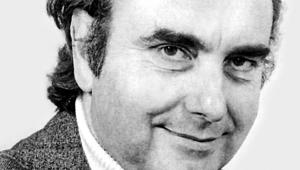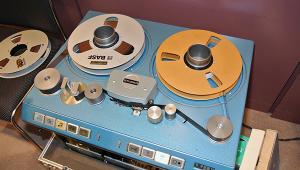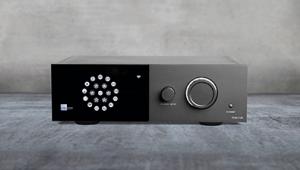Can You Hear The Real Thing?

Early this past summer, I enjoyed dinner with an audiophile friend. While he puttered in the kitchen, I perused his hi-fi publications. Among them was a 2024 equipment guide, an incomplete but aspirational compendium of products currently on the market, and in a couple of cases, no longer produced but still in plentiful supply. The listings included hundreds of items - phono cartridges from US$99 to $20,000 each, and amplifiers and loudspeakers from a few hundred up to the purchase price of an exotic high-performance automobile.

Sia pictured in 2013 at the 15th Anniversary TrevorLIVE gala in Los Angeles
Each entry featured a small photo and a concise paragraph in tiny font, heroically trying to differentiate similar products with overwrought descriptions. One new loudspeaker was described as offering more 'yin' than the 'yang' of its predecessor model, whatever that means.
Recording, Not Reality
That publication revealed the equivalent of a thousand and one flavours - perhaps a dreamscape for some gourmands, but one that provokes an obvious question: if each audio product on earth presents differently from similar products, how can any manufacturer make a claim for sonic accuracy?
'Accuracy' is one of the most enduring mantras in hi-fi marketing. 'Brings the performers into your room', 'Like being in the recording studio', 'Transports you to the concert hall' and similar pitches have been used for decades. Anyone who's spent more than a few weeks in this industry recognises this as advertising hype, but behind it is a core belief that an audio system (or a single product) can be capable of delivering the impact and nuance of a live performance.
Not to disparage the work of hi-fi engineers and designers, but isn't it time to retire allusions to accuracy? While some systems, with some recordings, may be capable of a simulacrum of a real performance - even the most jaded among us have been fooled a few times - for the most part even the best hi-fi equipment can't recreate the power and scope of a full orchestra or the subtlety of a solo performer in a intimate venue.
We'd be better off - and win more converts among music-loving innocents - to acknowledge that hi-fi exists not to recreate real events but to play back recordings of real events. Admittedly, 'recording, not reality' doesn't have the same persuasive power as 'the real thing'. It's far more honest, though.
To return to the car metaphor, motor vehicles are made in many varieties to serve many different purposes. A city bus is for something quite different than a two-seater sports car, quite obviously.
Many audio aficionados will use products for other than their intended purpose, in the pursuit of more of that elusive musical reality. A visit with a different audio mate revealed just such a move. This friend is an aggressive hobbyist who's ploughed through more high-end gear in the past few years than I can recall - his room has variously hosted giant speakers from Legacy, top-tier MBLs, pairs of MartinLogans, and a who's-who of big-name amplifiers.
Full Exposure
His most recent acquisitions were two tall shimmering silver towers backed by a massive amplifier. The whole system - my drive-by appraisal here - is likely in the quarter-million-dollar range. It's an impressive combo, but one more suited to a mastering studio than to a home listening environment.
During a recent session, we heard among many other selections, at my suggestion, Sia's 'Chandelier'. It's a great pop song that I've enjoyed in many situations, but here it was so intensely dissected that every studio trick was viciously exposed, to the point where the recording's coherency fell apart.
My friend's high-end system was arresting in its ability to reveal all, but perhaps that's not always in the best interest of musical satisfaction.






















































